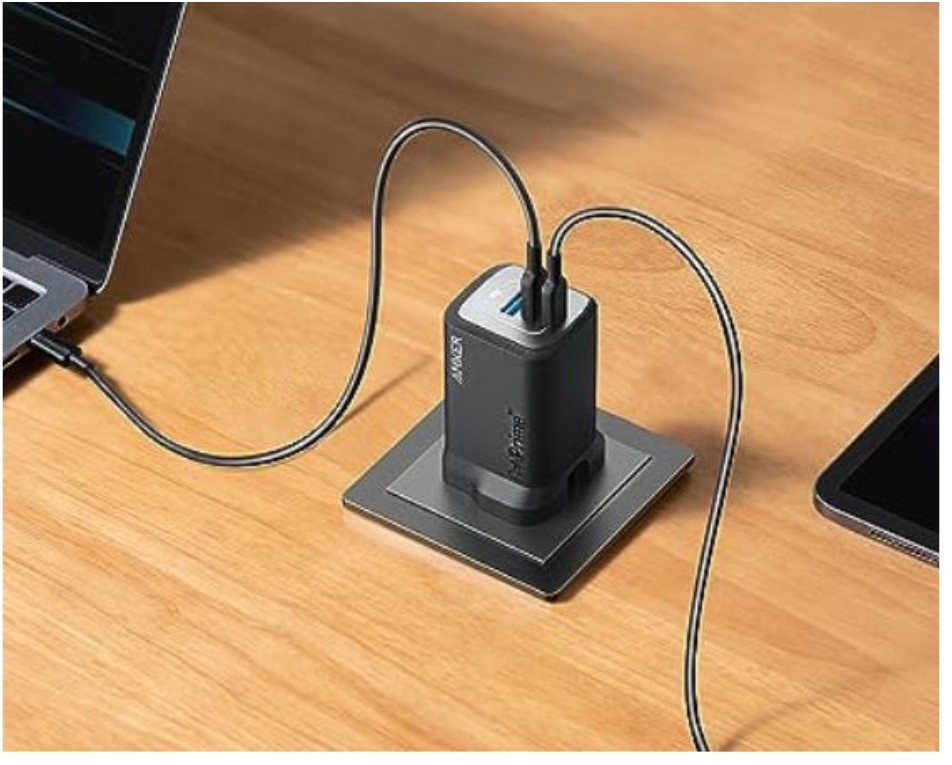How to Choose the Best Fast Charger for Your Device?

Choosing the right fast charger can make a big difference in how quickly and safely your device powers up. A charger that matches your device’s power needs ensures efficient performance without overheating or long-term damage. Many users overlook key factors like wattage, protocols, and cable quality. Understanding these details helps you select a charger that works faster, lasts longer, and keeps your battery safe.

Understand Your Device’s Power and Protocol Needs
Determine Your Device’s Maximum Charging Wattage
Every device supports a specific maximum charging wattage. Using a fast charger with lower output slows charging, while one that’s too powerful won’t speed it up further. Check your phone or laptop’s specifications—usually listed in watts (W)—to find the ideal range. Matching wattage ensures stable and efficient power delivery. For example, most smartphones handle 18W–45W, while laptops may require up to 100W for optimal performance.
Identify Supported Charging Protocols
Devices rely on charging protocols like Power Delivery (PD), Quick Charge (QC), or PPS to communicate with the fast charger. If the charger doesn’t support your device’s protocol, it may default to slow charging. Check the product manual or the manufacturer’s site to confirm compatibility. Choosing a charger that supports multiple protocols helps power different devices efficiently, making it a smart and versatile long-term investment.
Match the Right Port and Cable Type
The charging port and cable type determine how efficiently power transfers. USB-C ports are now standard for most fast chargers because they support higher currents. If your device uses USB-A or Lightning, use the correct cable to maintain compatibility. Avoid cheap cables—they can cause voltage drops or overheating. Using the right combination of port and certified cable ensures fast, safe, and reliable charging performance.
Evaluate Charger Features and Build Quality
Check Wattage, Voltage, and Current Ratings
A good fast charger clearly lists its wattage, voltage, and current ratings. These specifications show how much power it can safely deliver. For example, a 65W charger may provide 5V/3A, 9V/3A, or 20V/3.25A outputs for different devices. Consistent voltage and stable current prevent damage and improve efficiency. Always match your device’s requirements to the charger’s output range for safe, reliable charging every time.
Look for Safety Certifications and Protections
Reliable fast chargers include certifications like UL, CE, or FCC, ensuring they meet global safety standards. Built-in protections such as overvoltage, overcurrent, and temperature control prevent electrical hazards. Chargers without these safeguards may overheat or damage batteries. Always buy from reputable brands that publish their safety compliance data. A certified charger may cost more, but it provides lasting safety and better performance for your devices.
Consider Multi-Port and Smart Charging Options
Modern fast chargers often include multiple ports, letting you power several devices simultaneously. Look for models with intelligent charging technology that adjusts power output based on each device’s needs. Smart chargers detect when a battery is full and reduce current automatically, preventing strain. Choosing a multi-port charger with adaptive features simplifies charging at home or while traveling, keeping all your devices powered efficiently.

Practical Tips for Choosing and Using a Fast Charger
Pick a Charger That Supports Current and Future Devices
Future-proof your setup by selecting a fast charger that supports higher wattage and multiple protocols. Devices evolve quickly, and a versatile charger can handle everything from phones to laptops. Look for USB-C PD chargers rated up to 65W or 100W. They offer flexibility without constant upgrades. Investing in a high-capacity charger ensures long-term compatibility, saving money while maintaining charging speed and safety.
Use Certified Cables for Best Performance
Your fast charger is only as good as the cable you use. Certified cables—especially those with USB-IF or MFI (for Apple devices) labels—support stable voltage and protect your device from power surges. Low-quality cables often limit current flow, causing slow charging or excessive heat. Always pair your charger with a certified cable that matches your device’s port and wattage requirements for consistent, safe charging results.
Avoid Overheating and Overcharging Habits
Even the best fast chargers can’t offset poor charging habits. Avoid charging under direct sunlight or placing your phone on soft surfaces that trap heat. Unplug your device once it reaches 80–90% to reduce long-term stress on the battery. Continuous full charges or charging overnight may gradually wear the battery. Managing heat and charge cycles helps extend your device’s overall battery health and lifespan.
Conclusion
The best fast charger balances power, safety, and compatibility. By understanding wattage, protocols, and certifications, you can select one that fits your device perfectly. Pair it with a certified cable and follow smart charging habits to prevent overheating and battery wear. A well-chosen charger isn’t just convenient—it protects your investment. With the right setup, you’ll enjoy faster, safer, and longer-lasting charging every day.



